How to Wear a Women's Wig: A Beginner's Guide
Posted by Santana Fell on 2025 Apr 29th
Women’s wigs have become a fashion staple, offering contemporary women the versatility, convenience, and freedom to experiment with different hairstyles without the commitment to stick to any particular style, length, or hair color. But most importantly, wigs protect your natural hair from chemical damage and environmental stressors, keeping it healthy while you explore different hair trends.
Whether you're experiencing hair loss, want to change your look without damaging your natural hair, or simply enjoy the flexibility that wigs provide, this blog will walk you through everything you need to know about choosing, wearing, and caring for women's wigs.
What Is a Wig?
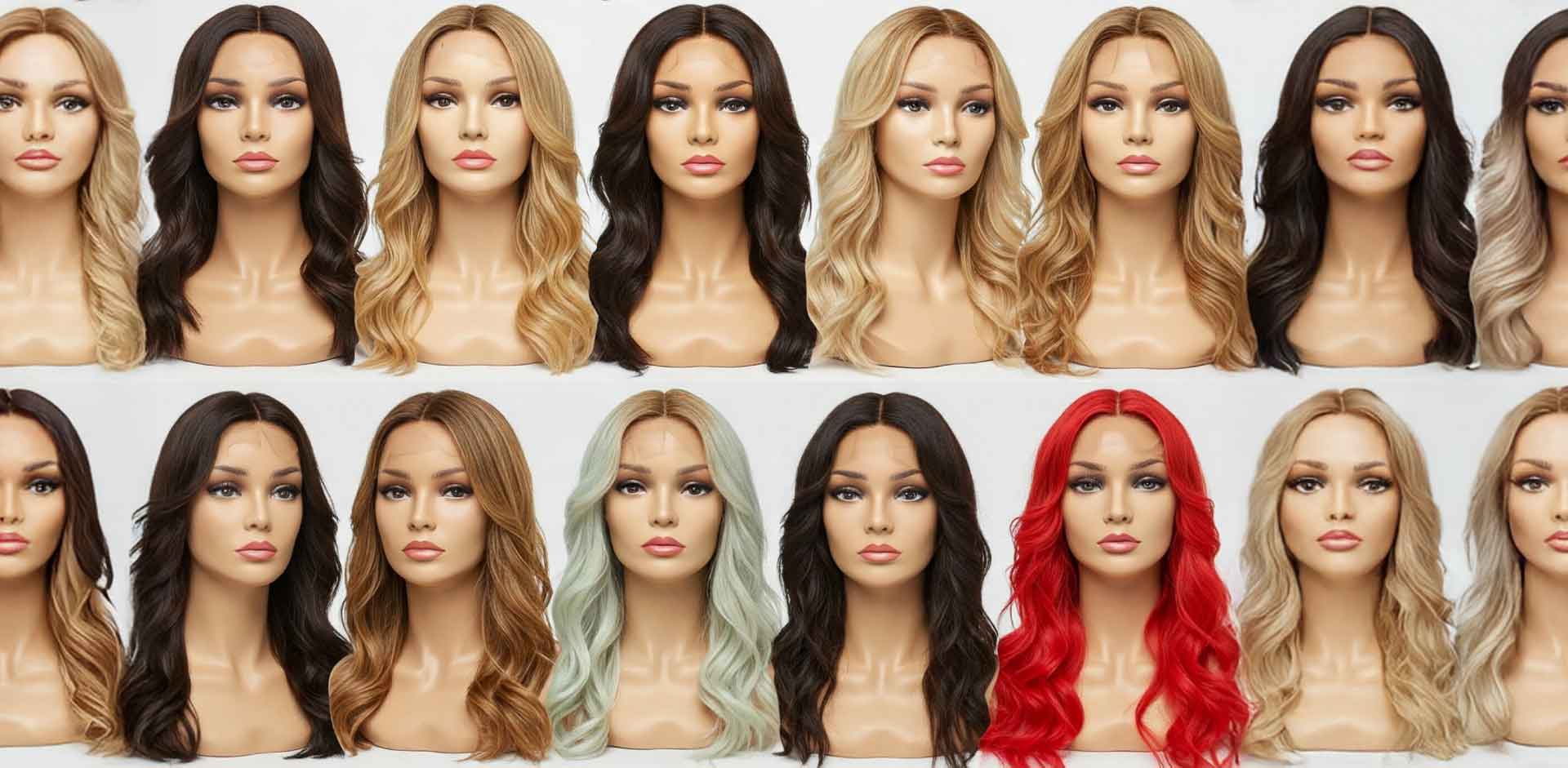
A wig is a hairpiece made to cover your entire scalp. It is either made from human hair, synthetic fibers, or a blend of both.
Modern wigs for women are designed to mimic the look of natural hair. These wigs come in countless styles, lengths, and colors to suit various needs and preferences. Women’s wigs can be worn for fashion, convenience, religious reasons, medical purposes, or to address hair loss.
Contrary to popular beliefs, wigs are not limited to women with complete hair loss. It is for every woman who wants to look more beautiful!
Why Women Wear Wigs
Women choose to wear wigs for numerous reasons:
- Medical Conditions: Hair loss from thinning, chemotherapy, alopecia, or other medical conditions
- Hair Damage: Giving natural hair a break from chemical processing or heat styling
- Convenience: Quick style changes without lengthy salon visits
- Experimentation: Trying different colors and styles without commitment
- Religious Observance: Some religious practices require married females to cover their natural hair
- Protective Styling: Particularly common in women of African origin, who use wigs as hair care to protect their natural hair
- Special Occasions: Creating elaborate styles for events like marriages.
- Professional Requirements: For acting, modeling, or other performance arts
Types of Hair
Choosing a women’s wig can be intimidating as a beginner, especially with the wide range of options available. Let us simplify this process so you can make an informed choice.
Here are the different kinds of wigs that are commonly available online and in stores:
Human Hair Wigs
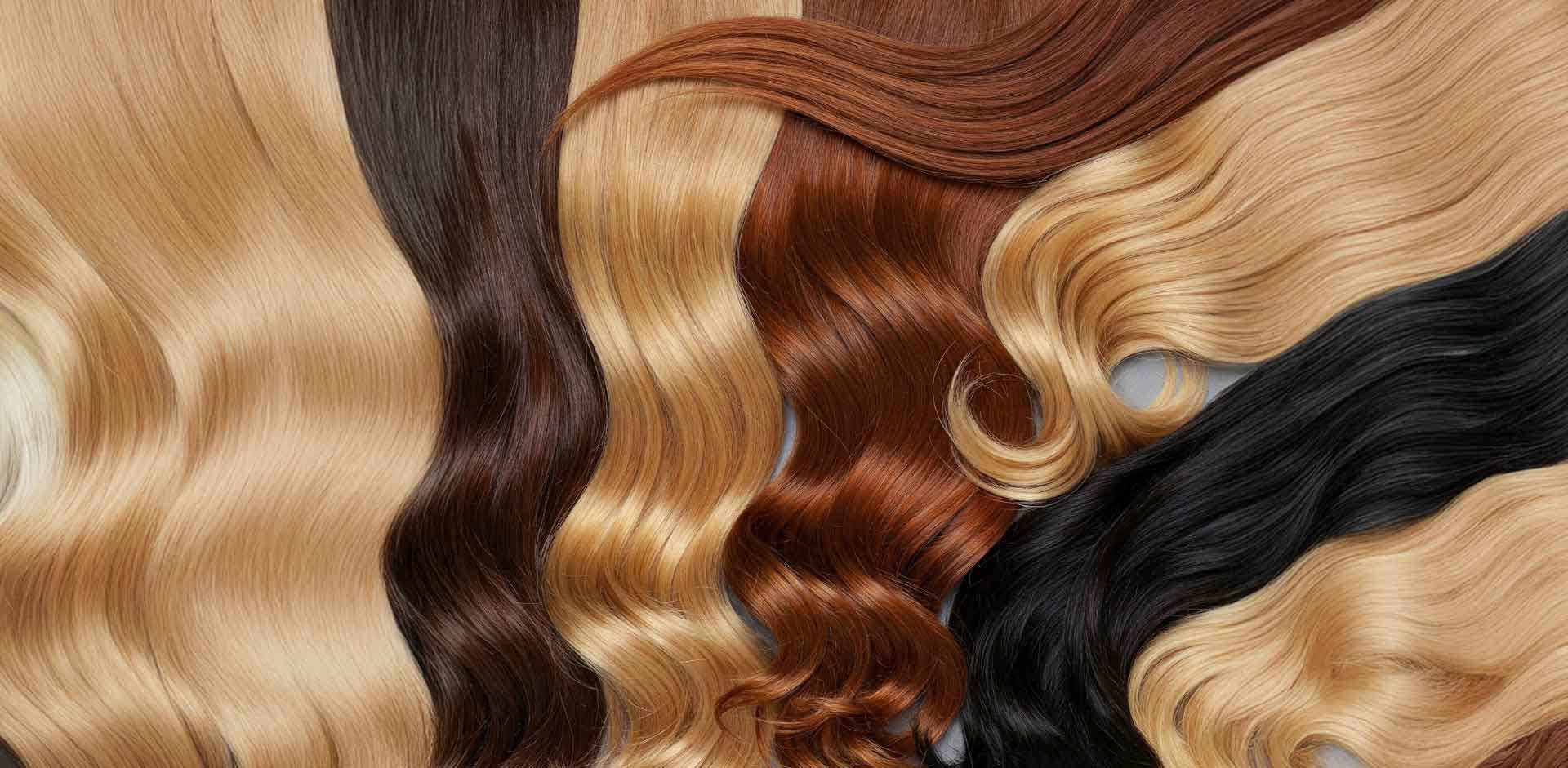
Human hair wigs for women are made with real human hair, which adds realism and gives the wig a natural look and feel. They are the best wigs for any hairstyle.
Benefits:
- Natural look and feel
- Can be styled with heat tools (curled, straightened)
- Can be dyed and customized
- Typically last longer (1 year or more with proper care)
- Move more naturally in the wind and when touched
Disadvantages:
- More expensive - you pay for premium quality
- Requires more maintenance
- Colors can fade with sun exposure
- Need to be restyled after washing
Synthetic Wigs
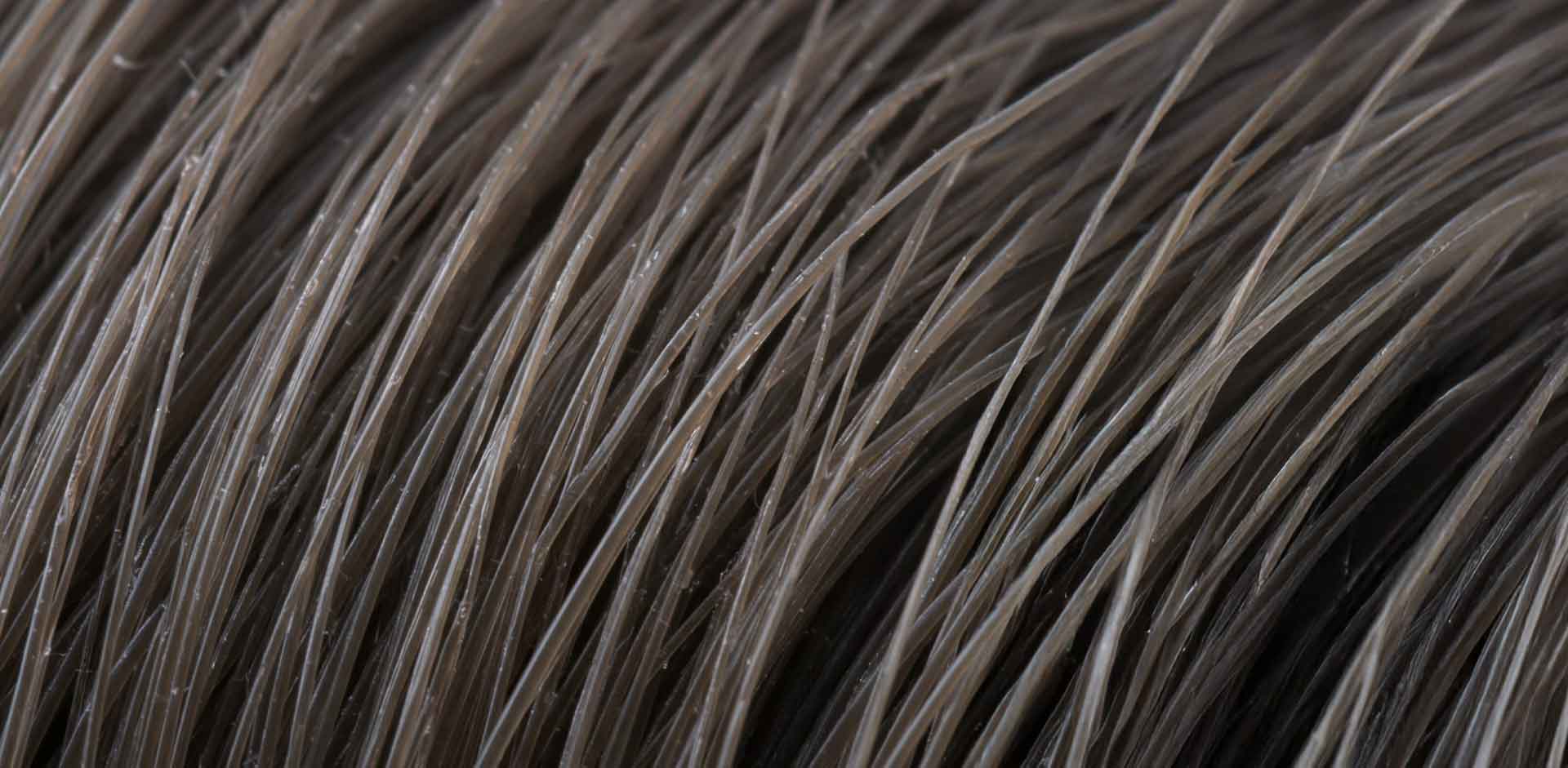
Synthetic hair wigs are made from synthetic fibers that have an unnatural shine. However, high-quality synthetic wigs look quite real and have reduced shine for a more realistic look.
Benefits:
- More affordable
- Pre-styled and maintain their shape
- Less maintenance required
- Available in a wide range of styles and colors
- Weather-resistant
- Lightweight
Disadvantages:
- Most cannot be styled with heat (standard synthetics)
- Cannot be dyed
- Shorter lifespan
- Can look artificial under close inspection
- May tangle more easily
- Can develop a shine that looks unnatural over time
Common Wig Types
Once you choose the hair type, the next important step is to select the base according to your needs and lifestyle.
Here are some standard hairpiece bases and options women’s wig wearers go for:
Lace Front Wigs
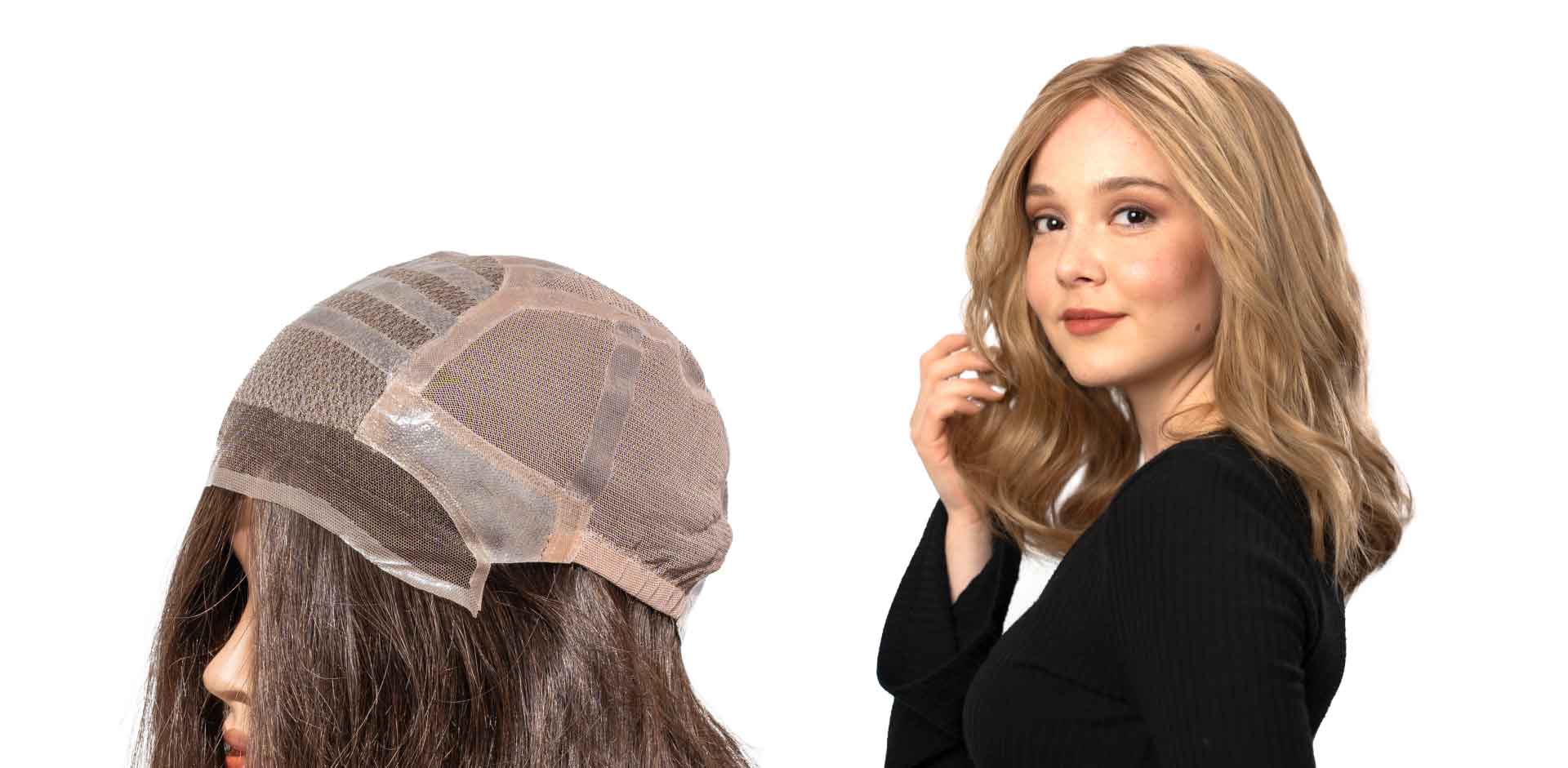
Lace front wigs have delicate lace material only in the front hairline of the wig to provide a seamless transition and an undetectable, natural-looking hairline.
Benefits:
- Creates the illusion of a natural hairline
- Allows for styling hair away from the face
- Available in both human hair and synthetic options
- Comes with other bases throughout the scalp for the best benefits of all materials.
Disadvantages:
- Requires careful cutting and application of the lace portion
- Lace can tear if not handled carefully
Full Lace Wigs
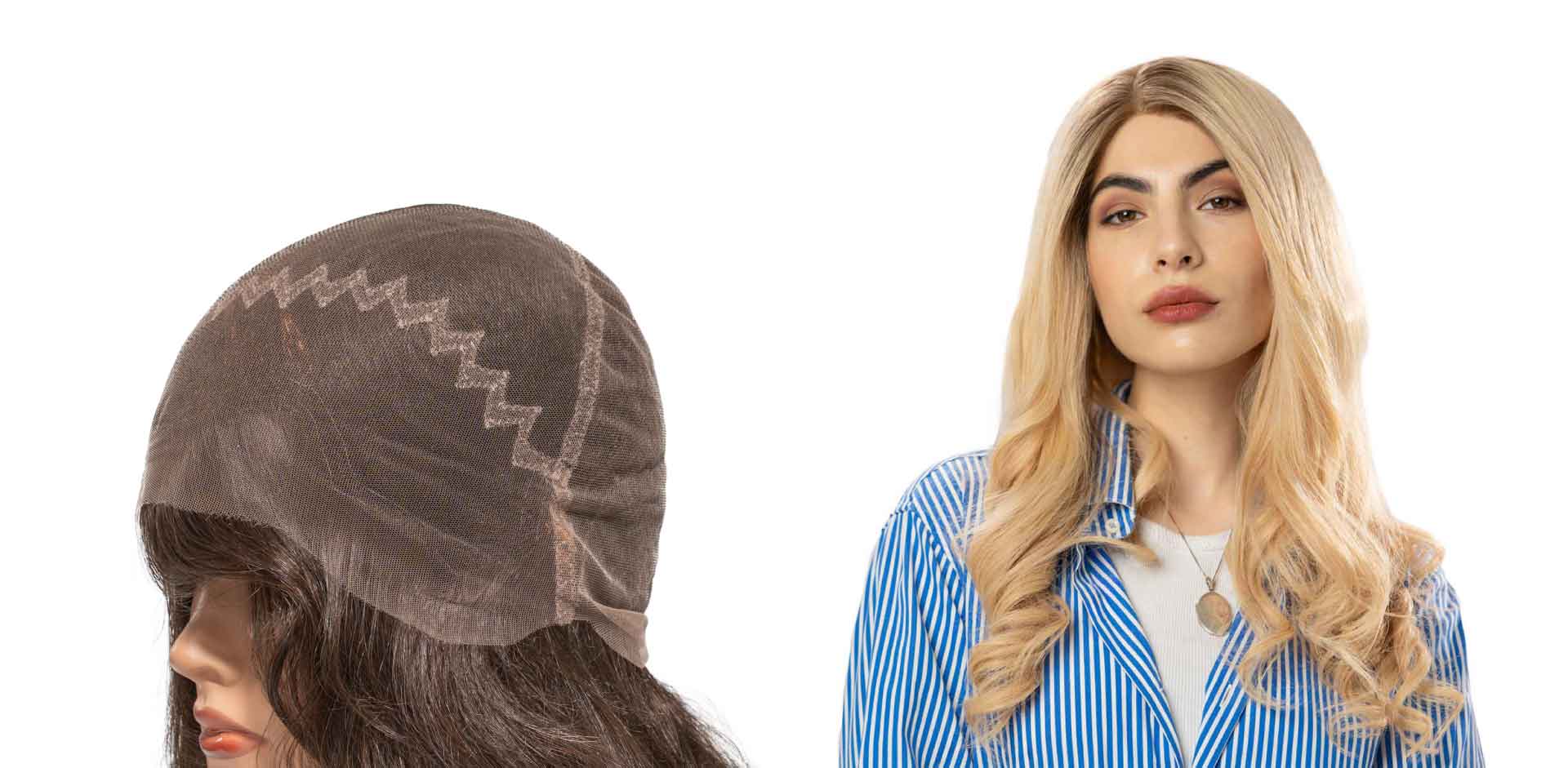
Full-lace wigs are the best for a natural look. They offer styling versatility with any-part hairstyles. Full-lace wigs for women are best for active ladies as this base is breathable, so sweating is not a problem.
Benefits:
- Most natural-looking option
- Can be parted anywhere
- Versatile styling options
- Most realistic hairline
- Breathable and lightweight
Disadvantages:
- Delicate and requires careful handling
Read more: Differences Between Lace Front, Lace Part, Full Lace & Glueless Lace Hairpieces
Monofilament Silk Top Wigs
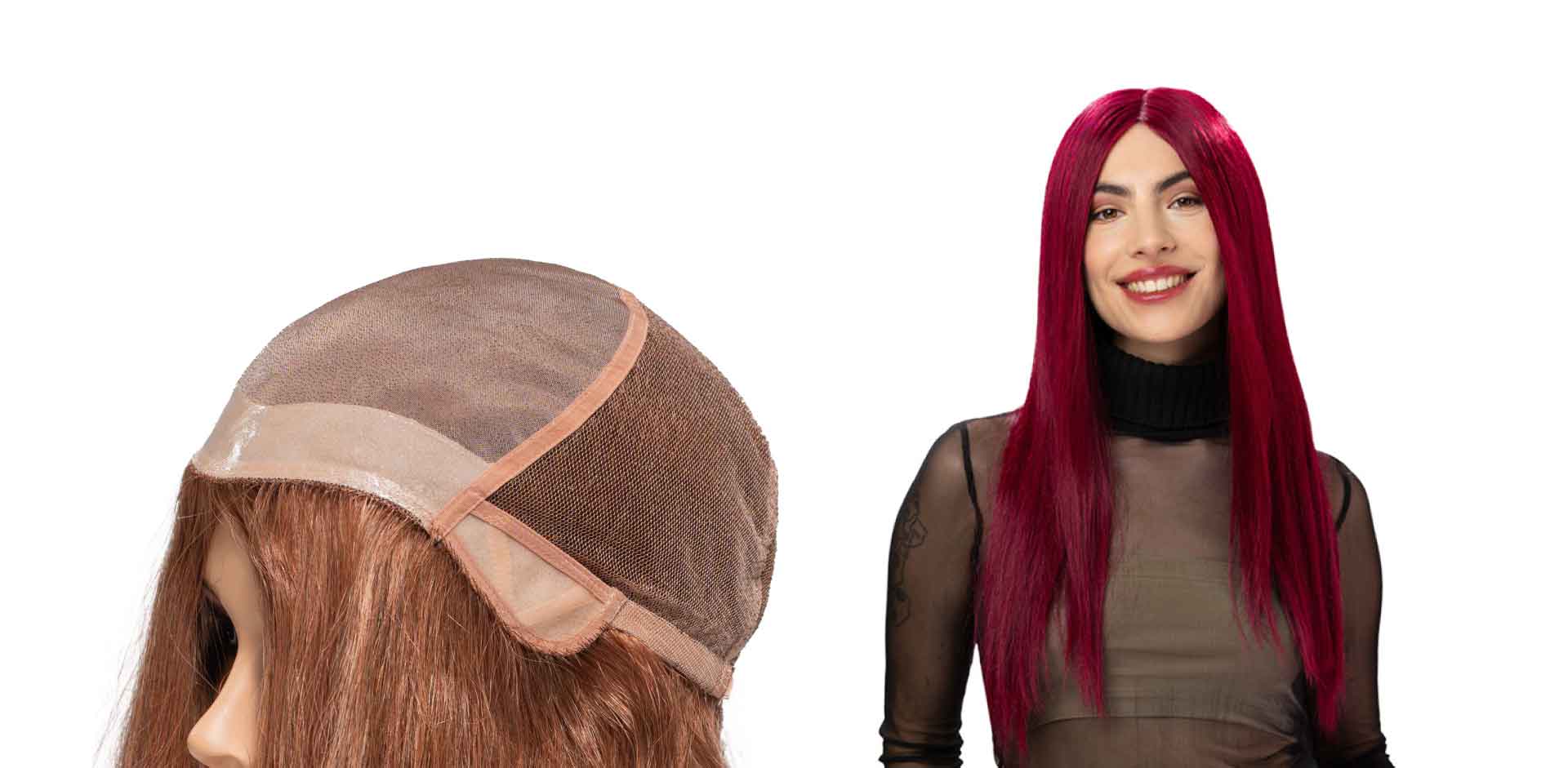
Mono silk top wigs are a type of wig that combines a monofilament construction base with a silk top. Individual hairs are hand-tied to create a natural appearance. The silk top layer covers the monofilament base, enhancing the scalp's realistic appearance, making it difficult to detect the wig even up close.
Benefits:
- Creates a realistic appearance with the illusion of hair growing from the scalp
- Allows for versatile parting
- Comfortable for long-term wear
- Durable
- low maintenance
Disadvantages:
- Slightly heavier
Glueless wigs
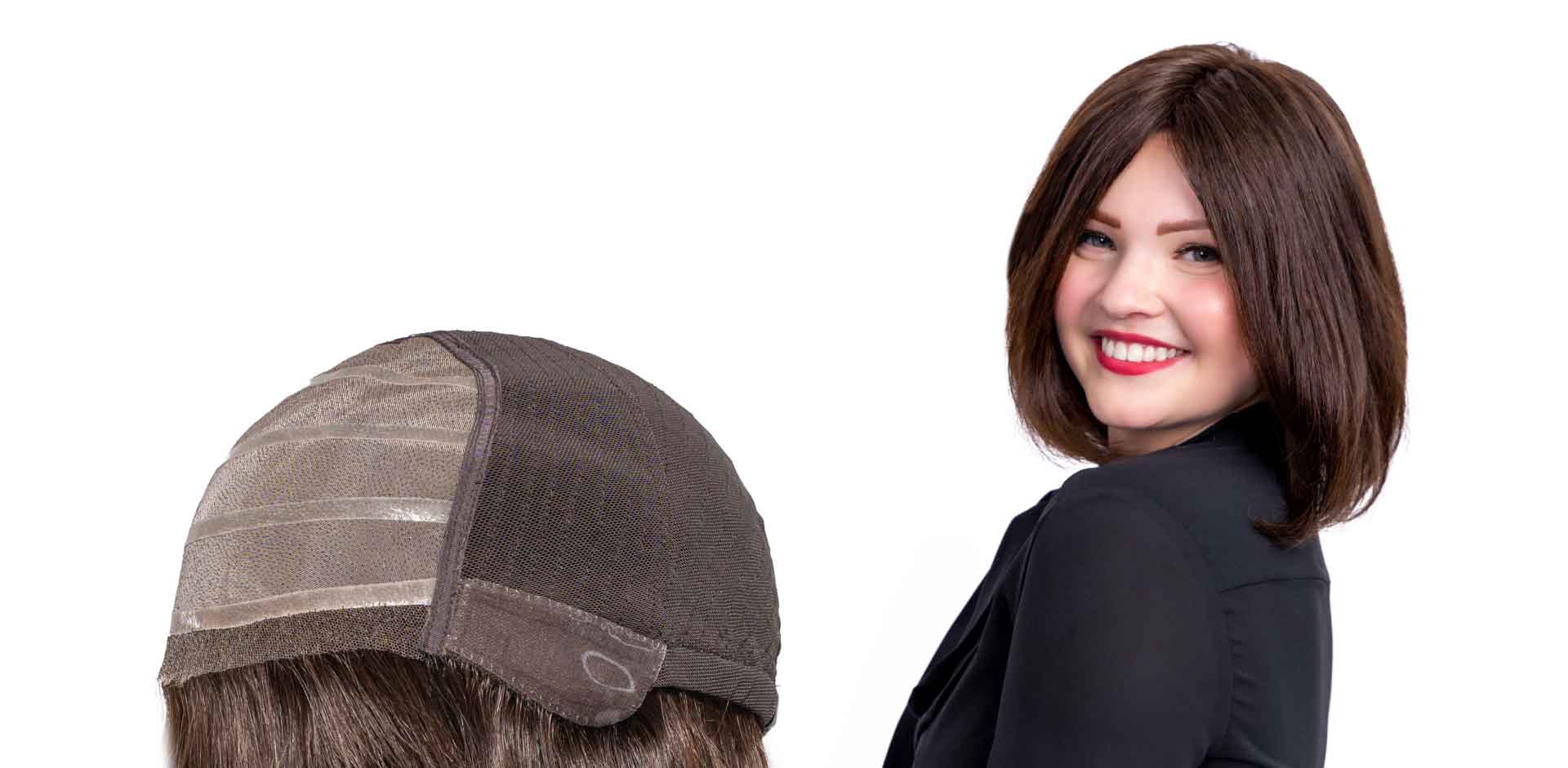
Glueless wigs are designed to be worn without the use of adhesive. They typically feature adjustable straps, combs, or clips to secure the wig in place. Silicone strips and tabs help create a suction effect on the scalp, preventing the wig from slipping.
Medical wigs are also glueless wigs specifically designed for individuals experiencing hair loss due to medical conditions such as cancer, alopecia, or other illnesses.
Glueless or medical wigs can be used by women with or without hair. People with hair must wear a wig cap to hold and secure their natural hair under the wig.
Benefits:
- Easy to apply
- Protective for natural hair
- Suitable for bald women with sensitive scalps
- Customizable
- Provides emotional support
Disadvantages:
- May require readjustments
- Potential for friction
How to Wear a Wig Based on Your Natural Hair Length
For No Hair or Very Short Hair
- Preparation: Clean and moisturize your scalp
- Wig Cap: Optional but recommended for comfort
- Securing: Use wig tape or adhesive around the perimeter for extra security
- Positioning: Place from front to back, adjusting to align with your natural hairline
For Short Hair
- Preparation: Slick hair down with gel or hairspray and use bobby pins
- Wig Cap: Use a mesh cap to flatten hair
- Securing: Utilize the wig's combs and adjustable straps
- Adjustment: Ensure all natural hair is tucked in and the wig sits securely
For Medium Hair
- Preparation: Tie your hair into a ponytail close to the scalp in a flat pattern
- Wig Cap: Use a wig cap that matches your skin tone
- Distribution: Ensure the hair is flat and evenly distributed to prevent bumps
- Application: Apply wig from front to back, adjusting for comfort
For Long Hair
- Preparation: Create a low braided ponytail and pin it to the crown, or create French braids
- Alternative: Consider a high, flat bun with bobby pins for shorter wigs
- Wig Cap: Use a sturdy wig cap that can contain all your hair
- Double Check: Ensure no natural hair is peeking out from under the wig
How to Put On a Wig: Step-by-Step Guide
1. Prepare Your Natural Hair:
- Wash and condition your natural hair.
- Dry completely to prevent mildew under the wig.
- Style your hair flat against your head (braids, twists, bobby pins, or pin curls)
2. Apply a Wig Cap or Wig Grip (Optional but recommended):
- Choose a cap that matches your skin tone or hair color
- Pull the cap over your prepared hair, ensuring all hair is tucked in
- Secure with bobby pins if needed
- Choose between a wig cap (covers the full head) or a wig grip (like a hairband around the circumference of your head)
3. Prepare the Wig:
- Gently brush or comb the wig on a wig stand
- Remove any tangles
- If it's a lace front, trim excess lace if not already done
4. Apply the Wig:
- Locate the back of the wig (where the label is) and hold the front and back accordingly.
- Place the wig at the front hairline with your thumbs on the inside (Position at your natural hairline)
- Tilt your head slightly forward for a comfortable glide.
- Slide the wig from front to back.
- Adjust until it feels secure and comfortable while looking as natural as your own hair.
5. Secure the Wig
- Use the built-in combs (insert into your natural hair or against the wig cap)
- Adjust the straps at the back for a snug fit
- Use bobby pins strategically if needed for extra security
- Adjust ear tabs and stays for the ideal fit
- Ensure the nape of the neck sits comfortably against your scalp without folding.
Style as Desired:
- For human hair wigs, style as you would natural hair
- Synthetic wigs generally come pre-styled.
- Blend wigs with your natural hair on the front hairline for a realistic look.
- Take the wig to your hairstylist if you have a specific cut that suits your face shape.
Common Mistakes to Avoid

- Wrong Size: Wigs are available in various head sizes, such as petite and large. Always measure your head circumference before purchasing a wig and choose the correct size.
- Incorrect Placement: Wearing the wig too far forward or back from your natural hairline. Ideally, your hairline should start at a 4-finger space from your eyebrow.
- Skipping the Wig Cap: Especially problematic for those with longer hair. Also, ensure the wig cap or wig grip colour suits your skin tone for a seamless transition.
- Using the Wrong Products: Using regular hair products instead of wig-friendly hair care products.
- Over-Washing: Washing too frequently can shorten the wig's lifespan
- Heat Damage: Using high heat on standard synthetic wigs
- Sleeping in Your Wig: Causes tangling and premature wear
- Inadequate Storage: Not using a wig stand or proper storage methods
- Choosing Unrealistic Colors or Styles: Selecting options that don't match your skin tone or face shape
- Not Securing Properly: not using the correct adhesives, resulting in shifting or slipping and potential embarrassment.
Essential Wig Accessories
- Wig caps or wig grips: Create a barrier between your natural hair and the wig
- Wig Stand: For proper storage and styling
- Wig Brush or Comb: Specialized tools that won't damage wig fibers
- Wig Clips: For extra security
- Wig Tape or Adhesive: For added security
- Wig Shampoo andConditioner: Specially formulated for wigs
- Styling Products: Heat protectants, leave-in conditioners, etc
- Bobby Pins and Hair Pins: For additional security
- Powder or concealer: To blend the part line to your skin tone
FAQs on Wigs
1. How long do wigs typically last?
Human hair wigs can last long time, depending on your use and maintenance.
2. Can I sleep in my wig?
It's not recommended to sleep in wigs, as this can cause tangling and premature wear. Remove your wig at night and store it properly on a wig stand.
3. How often should I wash my wig?
For regular wear, wash human hair wigs every 7-10 wears and synthetic wigs every 15-20 wears. Adjust based on product buildup, sweat, and environmental factors.
4. Can I color my wig?
Human hair wigs can be colored, but it's best to do it professionally. Synthetic wigs cannot be dyed with conventional hair color.
5. How do I make my wig look natural?
Choose a lace front style, blend your baby hair at the hairline, pluck the parting to make it less dense, and consider having it customized by a professional.
6. Can I wear a wig if I have sensitive skin?
Yes, look for wigs with hypoallergenic caps and materials. Consider wearing a soft wig liner to create a barrier between the wig and your skin.
Check Out Our Bestselling Human Hair Wigs
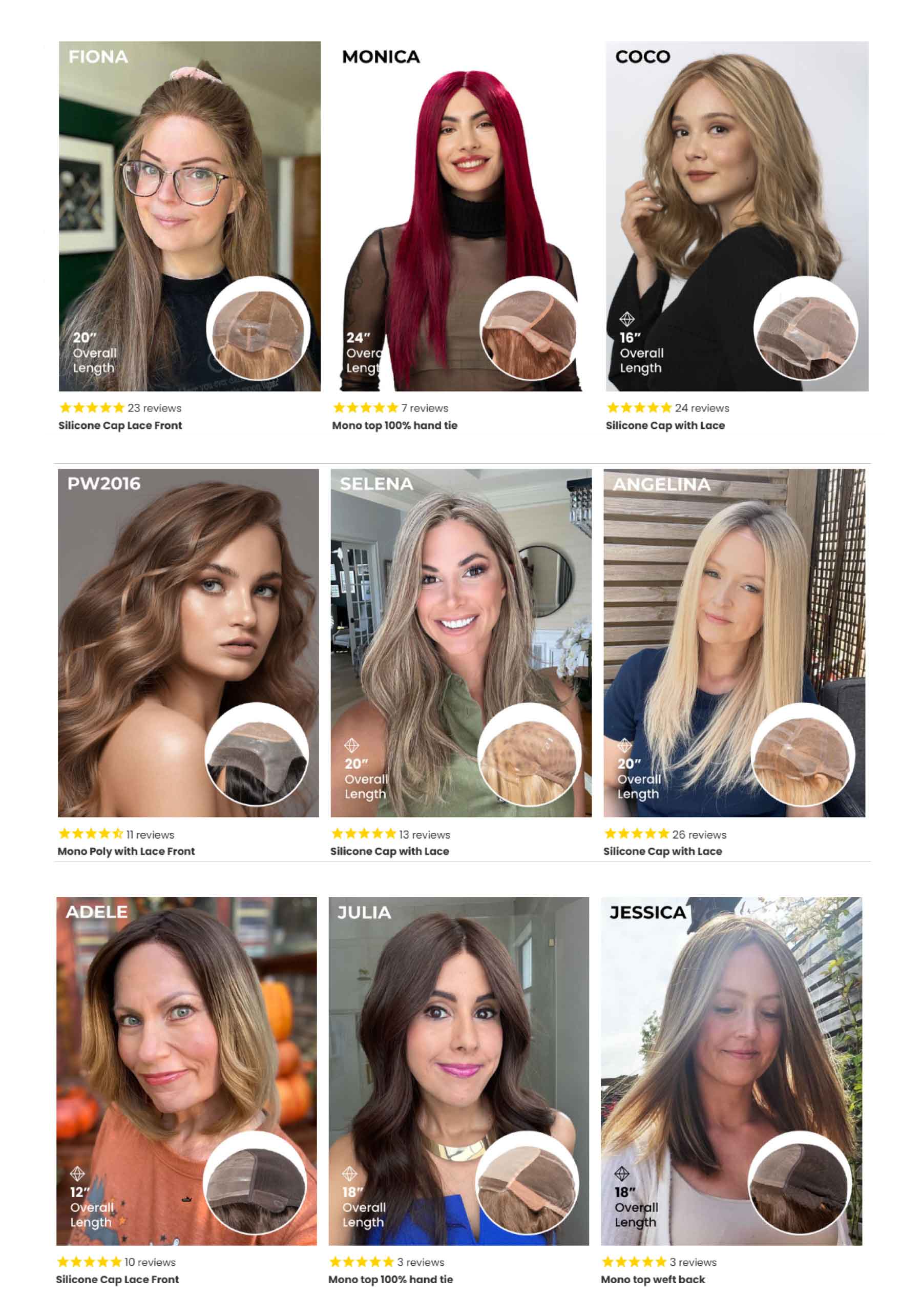
Wigs offer endless possibilities for switching up your appearance, protecting your natural hair, and addressing hair loss concerns. All while allowing you to experience the joys of having luxurious hair in lengths you could only dream of!
Give yourself a new look today!
 Likes
Likes










